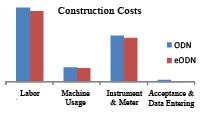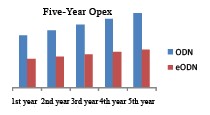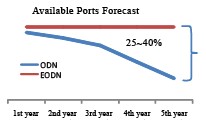eManager for Unprecedented Management Experience
In this information era, broadband construction is gaining fervor. In China, the broadband rollout is in full swing, and a “Broadband China” strategy has been formulated by the national government. Tri-network integration is making it increasingly urgent for operators to provide all services. 3G and 4G network deployment and the emergence of new applications—such as smart transportation, smart grid and wireless city—have spurred the development of optical networks. But there are some serious problems with optical networks.
Operators have been plagued by high installation costs brought about by inaccurate resource data, including data on ports and connections. Troubleshooting has also been problematic because existing fault-management systems are not suitable for optical networks, and faults have to be manually located.
Many factors contribute to inaccurate resource data. Resource data may not have been properly obtained, or mistakes may have been made in the manual entering of data during construction or routine maintenance. In the field, information may be written on paper labels or tagged to network equipment, which makes it more difficult to modify data. Different companies or departments may maintain the same network but save different copies of data, leading to inaccuracies or even conflicting data. Without a good troubleshooting system, the speed at which a fault is located is largely determined by how familiar the maintenance engineer is with the network. The engineer has to memorize the whole network map but cannot share it with others. This leads to inefficient troubleshooting.
OAM difficulties incur high opex in optical networks. In light of the continuous growth of optical networks, this trend cannot be quickly reversed. Existing data inaccuracies give rise to flow-on inaccuracies that exacerbate network problems. As problems worsen, data in the resource system become more inaccurate and unreliable. Resources may become unusable because they become difficult to test, and network resources are wasted. The effect of this is increased capex.
To address management problems that occur at every stage of the ODN lifecycle, a full-lifecycle optical network management solution is needed. ZTE’s eODN system covers all process across the entire optical network. Since it was released in 2011, eODN has attracted widespread industry attention and has been fully verified. eODN gives operators a slew of features for intelligent, efficient, flexible, pain-free optical network management. As part of eODN, eManager elevates ODN management to a new level.
Operational Convenience
eManager has a function that guides a field engineer to perform patch cord operations. eManager turns on a LED that indicates the port to be connected. This limits the possibility of manual errors. After the port has been connected, eManager performs an on-site check and gives prompts so that a second field visit is not needed. All ports are also displayed in a list for ease of searching.
Simplified Workflow
Entering data is usually burdensome for construction and maintenance personnel. Manually entering huge amounts of resource data is inefficient and results in errors being made. Errors are difficult to discover and may provide an inaccurate picture of actual network conditions after the network has been built. eManager allows one-key data entry. With only a couple of clicks, a vast amount of data can be saved in the resource system. Needless to say, the data-entry workload is drastically reduced in the later stage of construction and during routine maintenance.
eManager effectively manages every stage of the ODN lifecycle. OAM efficiency is improved, and management costs are cut almost in half. This system results in clear, accurate data on network resources and prevents resources being wasted. With its inherent advantages, eManager gives operators an improved OAM experience.
Lower Costs


